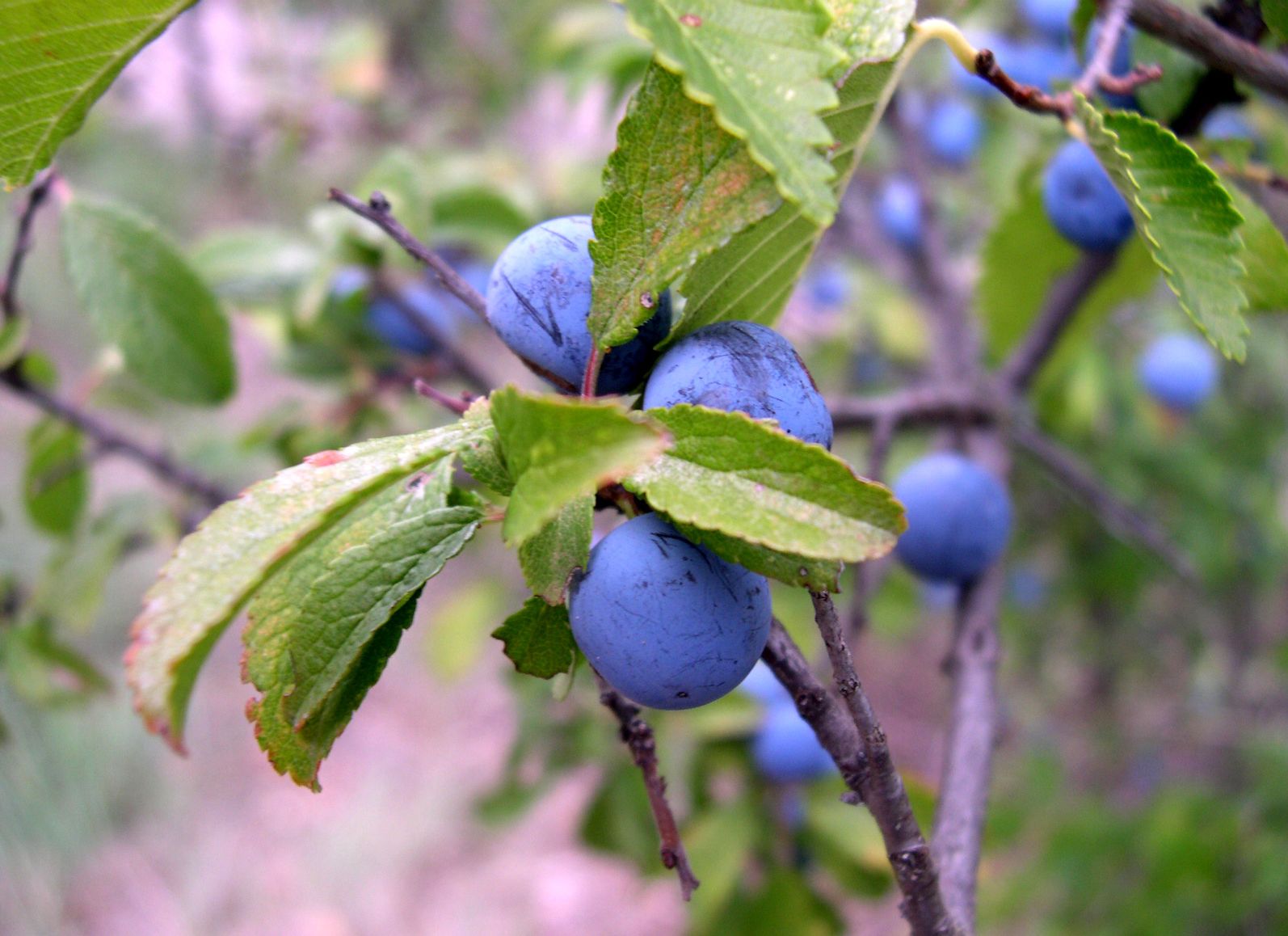Blue fruits get their color from compounds known as anthocyanins. But besides being the source of the vibrant color, anthocyanins also give you some health benefits. Researchers state that food high in these pigments may help to avoid cardiovascular disorders, cancers, diabetes, and other illnesses.

Blue fruits – plums. Image credit: Emi Yañez via Flickr, CC BY 2.0
Why blue fruits are rare in nature?
Scientists do not know the exact answer to this question. However, the reason why blue fruits are rare in nature may be related to aspects of evolution.
You probably have noticed that the blue color is not frequently seen in live organisms. This color is almost universally associated with toxic things and spoiled food, and that is why animals typically avoid foods with that color as much as possible.
This could mean that plants use blue as a way of protecting themselves from being eaten. In contrast, nutrition and freshness are mostly associated with green, red, and orange colors. But while blue plants successfully reduce their chances of being consumed, they also lose a way to spread with the help of animals, through seeds and pits. This leads to a lower incidence and a lower number of blue fruit species, too.

Blueberries – a close-up photo. Image credit: Pxhere, CC0 Public Domain
Blueberries
The first fruit that probably comes into your mind when you think about blue fruits is the blueberry. They have lots of fiber and contain high levels of manganese, vitamins C and K. Blueberries also contain antioxidants that protect the DNA against free radical damage.
Elderberries
Elderberries are traditionally used to defend against the cold and flu. Indeed, scientific research confirms that these berries can help recover from the flu faster. They are also high in vitamins C and B6, which play an important role in protecting the immune system.
Concord grapes
One more blue fruit which defends you from cold is Concord grapes. This variety of blue grapes helps to increase beneficial immune cell counts and blood antioxidant levels. They are higher in antioxidants than red or green varieties of grapes.

Concord grapes at the market. Image credit: Peter Burka via Flickr, CC BY-SA 2.0
Black currants
Another blueberry with multiple health is black currants. They are high in vitamin C. A cup (112 grams) of black currants has more than two times of recommended daily value for this vitamin. Vitamin C is a potent antioxidant and helps protect against cellular damage and chronic disease. Moreover, it helps to heal wounds and strengthens the immune system.
Damson plums
Damson plums are a variety of blue plums which is often dried to make prunes. They are widely known as a remedy for digestive problems. As prunes are high in fiber and sorbitol, they may increase stool frequency and soften the stools to help to get rid of constipation.
Figs
Although mostly pink on the inside, these fruits are often blue on the outside, but not all varieties.
Figs are a healthy food choice. You may easily eat them instead of sweet foods, and they also provide lots of health benefits. For example, figs are known to contribute to blood pressure reduction, improve digestion, and even increase bone density. They are naturally fat-free and cholesterol-free and are a good source of calcium, iron, magnesium, potassium, and vitamins A and C.
Final word
There are not many varieties of blue fruits. They, however, are delicious. Also, because of their natural composition, they are packed with chemical compounds that have a good effect on human health.
Blue fruits have relatively high amounts of antioxidants, vitamins, and anthocyanins. This is why they are a good choice for people who seek ways to improve their health and delay aging. Eating these fruits usually reduces inflammation and fights various chronic conditions, including type 2 diabetes and heart disease, and also helps to stave off oncological diseases.
